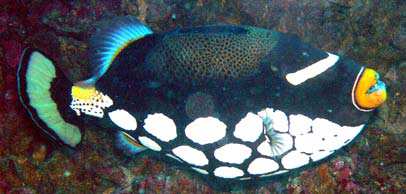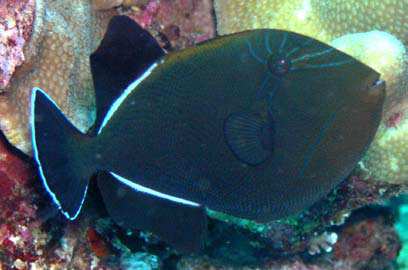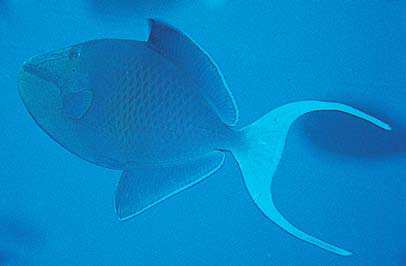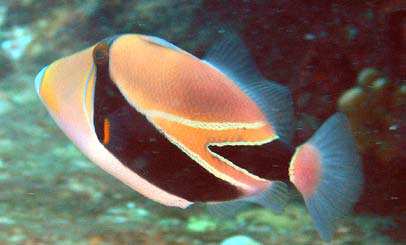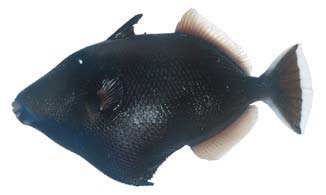BALISTIDAE
Triggerfishes
By Keiichi Matsuura
|
Small or medium-sized fishes, up to 80 cm in total length, with deep, moderately compressed body encased with very thick, tough skin with large scale plates easily discernible as individual unites; scale above pectoral-fin base in many species enlarged, forming a flexible tympanum. Gill opening a relatively short vertical to oblique slit in front of pectoral-fin base; mouth small and usually more or less terminal; teeth heavy, 8 in outer series of upper jaw and lower jaw. Three dorsalfin spines, the second spine more than one half of the length of the first; the first spine capable being locked in an upright position of erection by the second; most dorsal, anal and pectoral-fin rays branched; pelvic fins and spines rudimentary, represented by a series of 4 pairs of enlarged scales encasing the end of pelvis. Lateral line inconspicuous. Similar families occurring in the area. Monacanthidae: two dorsal-fin spines, only the first of which is long and prominent; body more laterally compressed; fewer and less massive teeth in jaws; scales shagreen-like, with individual basal plates small and not readily distinguishable from one another to the unaided eye. Remarks. Most species benthic, occurring in coral and rocky reefs from the coastline to a depth of 100 m; some species (e.g. Canthidermis) pelagic in open water. Feed on bottom invertebrates, but also zooplankton (e.g. Melichthys indicus). High valued as food in many handline fisheries. |

|
|


